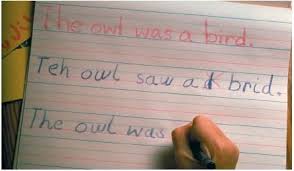Dyslexia at a Glance
- Dyslexia is the name for specific learning disabilities in reading.
- Dyslexia is often characterized by difficulties with accurate word recognition, decoding and spelling.
- Dyslexia may cause problems with reading comprehension and slow down vocabulary growth.
- Dyslexia may result in poor reading fluency and reading out loud.
- Dyslexia is neurological and often genetic.
- Dyslexia is not the result of poor instruction.
- With the proper support, almost all people with dyslexia can become good readers and writers.

As with other learning disabilities, dyslexia is a lifelong challenge
that people are born with. This language processing disorder can hinder
reading, writing, spelling and sometimes even speaking. Dyslexia is not
a sign of poor intelligence or laziness. It is also not the result of
impaired vision. Children and adults with dyslexia simply have a
neurological disorder that causes their brains to process and interpret
information differently.
Dyslexia occurs among people of all economic and ethnic backgrounds.
Often more than one member of a family has dyslexia. According to the
National Institute of Child and Human Development, as many as 15 percent
of Americans have major troubles with reading.
Much of what happens in a classroom is based on reading and writing.
So it's important to identify dyslexia as early as possible. Using
alternate learning methods,such as multi sensory learning and teaching styles

Dyslexia: Warning Signs By Age
Young Children
Trouble With:
- Recognizing letters, matching letters to sounds and blending sounds into speech
- Pronouncing words, for example saying “mawn lower” instead of “lawn mower”
- Learning and correctly using new vocabulary words
- Learning the alphabet, numbers, and days of the week or similar common word sequences
- Rhyming
|
School-Age Children
Trouble With:
- Mastering the rules of spelling
- Remembering facts and numbers
- Handwriting or with gripping a pencil
- Learning and understanding new skills; instead, relying heavily on memorization
- Reading and spelling, such as reversing letters (d, b) or moving letters around (left, felt)
- Following a sequence of directions
- Trouble with word problems in math
|
Teenagers and Adults
Trouble With:
- Reading at the expected level
- Understanding non-literal language, such as idioms, jokes, or proverbs
- Reading aloud
- Organizing and managing time
- Trouble summarizing a story
- Learning a foreign language
- Memorizin
|

Assessment
Trained professionals can identify dyslexia using a formal evaluation
This looks at a person's ability to understand and use spoken and
written language. It looks at areas of strength and weakness in the
skills that are needed for reading. It also takes into account many
other factors. These include family history, intellect, educational
background, and social environment
It helps to identify dyslexia as early in life as possible. Adults
with unidentified dyslexia often work in jobs below their intellectual
capacity. But with help from a tutor, teacher, or other trained
professional, almost all people with dyslexia can become good readers
and writers. Use the following strategies to help to make progress with
dyslexia.

- Expose your child to early oral reading, writing, drawing, and
practice to encourage development of print knowledge, basic letter
formation, recognition skills and linguistic awareness (the relationship
between sound and meaning).
- Have your child practice reading different kinds of texts. This includes books, magazines, ads and comics.
- Include multi-sensory, structured language instruction. Practice using sight, sound and touch when introducing new ideas.
- Seek modification in the classroom. This might include extra time to complete assignments, help with note taking, oral testing and other means of assessment.
- Use books on tape and assistive technology. Examples are screen readers and voice recognition computer software.
- Get help with the emotional issues that arise from struggling to overcome academic difficulties.

Reading and writing are key skills for daily living. However, it is
important to also emphasize other aspects of learning and expression.
Like all people, those with dyslexia enjoy activities that tap into
their strengths and interests. For example, people with dyslexia may be
attracted to fields that do not emphasize language skills. Examples are
design, art, architecture, engineering and surgery.
Read more about learning disabilities click on the link below
SOURCE :- nlcg.org

